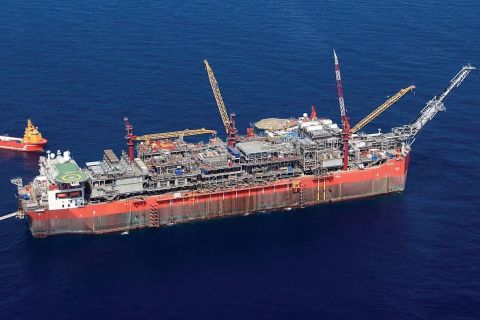Fewer available drilling rigs, increased costs and growing lead times all point to the offshore rig market moving into a multi-year supercycle.
According to Esgian Rig Analytics, offshore rig demand is finishing 2022 strong, with 2023 demand expected to be even stronger.
“The practical rig supply is tight. Not all the units that are idle are truly available or ready to be returned to market in a short time,” Cinnamon Edralin, Esgian’s head of rig market research, said during a 2022 year in review and 2023 outlook webinar on Dec. 7. “Costs have increased across the board, and lead times are growing. Supply chain issues are going to continue to be a challenge globally. And that being said, the rig market is moving into a multi-year supercycle.”

According to Edralin, rig supply took a major hit during the lower-for-longer downturn. Available jackups are down by 43, and floaters fell by 69 since 2018. Attrition is a factor, she said, with rigs being sent to scrap yards for recycling or converted for use in wind or production units.
Increased demand for jackups
At the same time, demand for jackups increased in 2022, driven by the Middle East, and for floating drilling rigs, driven by the Golden Triangle, she said.

Combined with increasing demand, the shrinking newbuild fleet is still uncommitted, few rig orders are coming in, reactivation periods for stacked rigs are taking longer, and the stacked supply is dwindling, she said.
Additionally, stacked rigs have been cannibalized for parts, she said.
Some stacked rigs are “just less desirable units, meaning there are fewer that are actually readily available to be reactivating.”
“This has created a condition for an ongoing tight market. So the tightness we've seen in 2022 is not a blip. We expect this will continue for the next few years,” Edralin said.
In 2022, offshore rig demand grew by about 6% globally, she said.
“We are expecting 2023 will be an even stronger year and are currently expecting demand growth of about 13% globally. One of the drivers of demand is the price of oil,” she said. “While $92 is a bit of a drop from this year's price, it is very comfortably high for operators to still be profitable and is not expected to have any kind of a negative impact on demand.”
Stacked rigs, staffing, inflation among worries
But factors like staffing will cause challenges going forward.
“In some cases, we're hearing about operators that have multiple projects that they are ready to move forward with, but they don't have enough personnel to staff all of them,” Edralin said. “So, they're having to pick and choose which ones they want to move forward with.” said.
Inflation is also a factor.
“At the beginning of this year, you could reactivate a seventh generation drillship in about six to nine months, and [at] a cost of about maybe $40 to $60 million. If you were to try to replicate that same exercise now, you're looking at a time period of about 12 to 18 months and a cost of more like $75 to $100 million,” she said.

For operators who haven’t secured a rig for 2023 or are eying one that is stacked, it’s unlikely they’ll be able to reactivate a rig on short-term notice next year.
Matthew Donovan, senior rig market analyst at Esgian, said that in 2022, drillship utilization rates rose to 85% from 74% and the working jackup count remained high, mostly due to demand in the Middle East. While semisubmersible drilling rig utilization lagged, drillship rates have remained stable during recent months.
“2022 has been a year of recovery,” he said.
Day rates have also been rising in response to the tightening supply, he said, while offshore drilling contractor fleet sizes are also changing.
“What we're seeing is drilling contractors once again interested in acquiring units after several years of downsizing,” Donovan said.
So far in 2022, nearly 60 offshore rigs have been sold, and most, he said, will continue to work as drilling units.
“This has been a reversal from previous trends, and in recent years, we saw a lot of rigs sold for recycling or for conversion. But this year what we've mostly seen is units sold to continue working as drilling rigs,” Donovan said.
This year, AES has purchased 20 jackups, ADNOC 11 and Arabian Drilling three, he noted. Two drillships have been sold this year. While 10 semisubmersibles have been sold this year, only four will continue to operate as drilling rigs.
Recommended Reading
E&P Highlights: April 1, 2024
2024-04-01 - Here’s a roundup of the latest E&P headlines, including new contract awards.
TotalEnergies Starts Production at Akpo West Offshore Nigeria
2024-02-07 - Subsea tieback expected to add 14,000 bbl/d of condensate by mid-year, and up to 4 MMcm/d of gas by 2028.
Seadrill Awarded $97.5 Million in Drillship Contracts
2024-01-30 - Seadrill will also resume management services for its West Auriga drillship earlier than anticipated.
Remotely Controlled Well Completion Carried Out at SNEPCo’s Bonga Field
2024-02-27 - Optime Subsea, which supplied the operation’s remotely operated controls system, says its technology reduces equipment from transportation lists and reduces operation time.
Shell Brings Deepwater Rydberg Subsea Tieback Onstream
2024-02-23 - The two-well Gulf of Mexico development will send 16,000 boe/d at peak rates to the Appomattox production semisubmersible.






